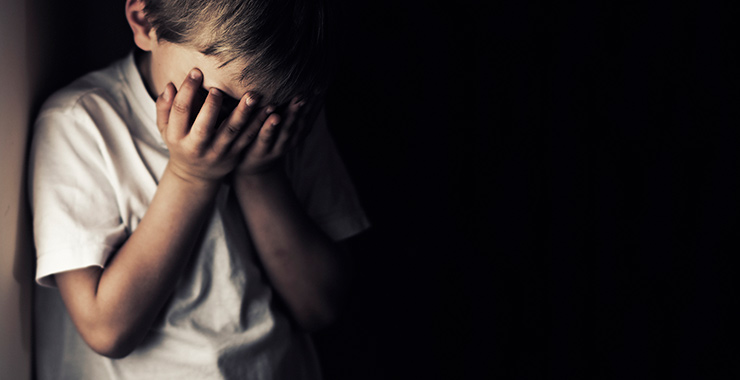Decoding Headaches: The Childhood Trauma Connection
Childhood trauma can cast a long shadow on one’s health. In this article, we’ll explore the intricate connection between unresolved childhood traumas and unexplained headaches, shedding light on the underlying psychological and neurological mechanisms triggering this distressing correlation.
Understanding Childhood Trauma’s Link to Headaches
Have you ever experienced unexplained headaches? It’s time to delve deeper into a surprising yet significant correlation: the connection between childhood trauma and persistent headaches.
Many suffer silently from debilitating headaches without understanding the potential underlying psychological triggers. As we unravel this association, the enigmatic link between unresolved childhood traumas and the distress of unexplained headaches emerges.
Emily Williams, a seasoned psychologist with extensive experience in trauma-related ailments, elucidates the intricate connection. “Childhood trauma can have a profound impact on our mental and physical health. It often remains unrecognized as a potential cause of persistent headaches in adults,” says Williams.
The Science Behind the Pain
Headaches triggered by past traumas are not merely a physical ailment but are deeply rooted in neurological and psychological mechanisms. The brain’s response to stress and trauma can manifest in recurring headaches, creating a formidable link between emotional distress and physical pain.
“Trauma can rewire the brain, leading to a hypersensitive stress response that contributes to chronic headaches,” explains Williams. Neurologically, altered stress responses and heightened sensitivity may contribute to the onset and persistence of headaches in individuals with a history of childhood trauma.
Recognizing the Patterns
Recognizing the signs and symptoms of trauma-induced headaches is crucial. Often, individuals may overlook the connection between their past traumatic experiences and present physical distress. Understanding the manifestations of trauma in recurring headaches can pave the way for acknowledgment and healing.
“Triggers for headaches can be emotional, arising from unresolved trauma. Patterns might emerge, including specific stressors or emotional situations,” mentions Williams. The recognition of these patterns is the initial step towards addressing the underlying causes.
Coping Strategies and Healing Pathways
Understanding the correlation between childhood trauma and headaches empowers individuals to adopt coping strategies and embark on a path of healing. “Coping strategies involve a multi-faceted approach,” says Williams. Grounded in therapeutic techniques and self-care, these strategies aim to alleviate both the emotional distress and physical pain.
“Mindfulness practices, therapy, regular exercise, journaling, and seeking support from groups with shared experiences are effective coping mechanisms,” adds Williams. Implementing these strategies can significantly contribute to managing trauma-induced headaches and initiating the healing process.
Building Resilience: Support and Community
Community and support play an integral role in healing. Mental health support communities provide a safe space for sharing experiences, finding solace, and gaining insights from others with similar journeys.
“Support groups offer empathy, understanding, and a sense of belonging,” says Williams. By engaging with others who have undergone similar experiences, individuals can find strength and resilience, fostering a path towards healing.
Professional Guidance and Seeking Help
While coping strategies and community support are valuable, seeking professional help is pivotal. Therapeutic approaches tailored to trauma-induced headaches involve specialized counseling and targeted therapies.
“Professional guidance from therapists or counselors can provide structured support to address trauma-induced headaches,” emphasizes Williams. Seeking help from professionals trained in trauma-related issues can significantly aid the healing process.
Case Studies: Stories of Triumph
Real-life experiences of individuals who have triumphed over trauma-induced headaches serve as beacons of hope and inspiration. These stories illustrate the resilience and the transformative power of healing.
“Mary’s story is a testament to the impact of therapy and community support,” shares Williams. “Through therapy and the encouragement of a support group, Mary learned to manage her trauma-induced headaches and eventually experienced a significant reduction in their frequency and intensity.”
Each case study emphasizes the uniqueness of the healing journey, offering diverse insights and strategies that can be valuable to those navigating their path towards recovery.
The Road to Self-Care and Wellness
The journey to wellness is a multifaceted one, interwoven with self-care and personal strategies. “Self-care techniques are crucial,” asserts Williams. “Practicing self-compassion, setting healthy boundaries, and engaging in activities that bring joy can significantly contribute to healing.”
Holistic well-being encompasses not only managing the symptoms but also fostering a lifestyle that supports mental and physical health. “Developing a routine that includes self-care and wellness activities is pivotal,” Williams emphasizes. “This routine should be adaptable and focus on what works best for the individual.”

Conclusion
Understanding the relationship between childhood trauma and unexplained headaches is an essential step towards healing. It empowers individuals to recognize the underlying causes of their distress and take affirmative steps towards recovery. With professional guidance, coping strategies, community support, and a commitment to self-care, the journey towards healing from trauma-induced headaches becomes more manageable.
Emily Williams concludes, “By acknowledging the connection between childhood trauma and persistent headaches, individuals can initiate their journey towards healing. It’s a path that requires patience, self-compassion, and the courage to seek help and support. Remember, healing is a unique journey, and each step taken is a stride towards a healthier, more empowered future.”




